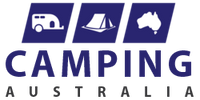Sometimes, we all need to escape the confines of our life in cities or built up areas. There is something wonderfully invigorating about being in the bush, doing something we love in a beautiful environment, without the hassle of incessant traffic or ringing phones. Using our bodies and giving our busy brains a break from the rigors and stress of everyday life is a great way to feel alive.
But it can be hard to get outdoors, making time in our busy lives is hard enough, but it’s even harder if ‘going bush’ isn’t something you normally do. Many people assume you have to go a long way to escape the city, but the truth is that adventure can often be found very close to every Australian city. Sometimes it’s even possible to find some small escape right in the heart of the city. People who really struggle to get away often don’t realise what may be available nearby, while for others, it’s because getting out takes some planning, and they don’t know where to start, or maybe it’s because they don’t have access to a car. The reality is though, that with a little planning and some basic experience – and even without a car – it’s quite easy to escape town and find solace in the outdoors.
Knowledge is Power

The first step to escaping is to do a little research to find out what maybe nearby – ask your more experienced ‘bush loving’ friends or get on and search Google. Often there are state or national parks that are surprisingly close to the City. Sydney, for instance, has the Royal National Park right on its doorstep to the south. Every major Australian city is on the coast, so if you’re into water sports then you have adventure and a place to escape to on your doorstep. Even in the heart of many cities it’s often possible to find some spots that are very natural and bush-like to get away from the bustle and escape into – like some sweet bush trail along the Yarra River in Melbourne, walking in the Adelaide Hills or rock climbing on Mt Wellington that overlooks Hobart.
Of course, it will depend a bit on what you’re into, but if you spend some time online you can find a wealth of resources and knowledge about most activities and areas.
Consider joining a club. Most outdoor activities have clubs associated with them, whether you are into canyoning, rock climbing, paddling, bushwalking, etc. Clubs are a great way to access local knowledge about your chosen activity. You can usually also learn basic skills through clubs, as well as find people to get into the outdoors with – which could be great if you don’t have a car.
If you don’t have access to a car (or friends with a car), then it’s still possible to get out to many destinations by public transport. Using Sydney again as our example, with a host of national parks on its doorstep, it’s super easy to go bushwalking, riding and climbing. You can take trains to the Royal National Park or the Blue Mountains. Even Melbourne, which has relatively few national parks nearby, still has some good options, like rail trails and state parks.
Planning Makes it Easy
Once you know what you’re doing, the next step is to make it happen. The first time you do anything is usually the trickiest, but having done it once it’s usually much easier the next time.
Before you leave on a trip:
- Put together a gear list for your chosen activity. It will mean you are less likely to forget crucial items. Make sure you have a decent hiking pack.
- If you’re leaving in the morning, pack your things the night before.
- If you’re leaving on a Friday night see if you can leave work a little early to avoid rush hour.
- Get petrol and do your food shopping or any other shopping required ahead of time, the earlier you arrive at your destination the sooner you can be doing what you love – and be less tired.
- If you have to take public transport to get to your destination, make sure you have the timetable sorted and have pre-purchased tickets. Most public transport networks now have apps or websites that make planning travel really easy.
HELPFUL LINKS
National Parks
One of the best places to find out information is from the various state national parks websites – they will list all the national parks and the activities that take place in them. They often have excellent trail information and maps for bushwalkers too.
Victoria http://parkweb.vic.gov.au
New South Wales http://www.nationalparks.nsw.gov.au
Queensland http://www.nprsr.qld.gov.au
South Australia http://www.environment.sa.gov.au/parks/home
Tasmania http://www.parks.tas.gov.au
Western Australia http://parks.dpaw.wa.gov.au
Australian Capital Territory http://www.act.gov.au/browse/topics/environment/national-parks-and-reserves
Northern Territory http://www.parksandwildlife.nt.gov.au
Paddling
http://canoe.org.au – links and information for both recreation and competitive paddling
www.adventurepro.com.au/paddleaustralia/ – online guides to paddling in Australia
Rock climbing
www.thecrag.com – an online database of rockclimbs in Australia.
Bushwalking
www.bushwalkingaustralia.org – the main bushwalking body in Australia, with links to the various state bushwalking bodies, many of which have links to bushwalking clubs as well as information about walking areas.
Mountain Biking
http://www.mtba.asn.au – the peak body representing mountain biking, with links
🔏 + 1.892365 BTC.GET - https://graph.org/Message--17856-03-25?hs=81a27e963d0ab2685fac66337492d8c9& 🔏
April 10, 2025
74uiaw
